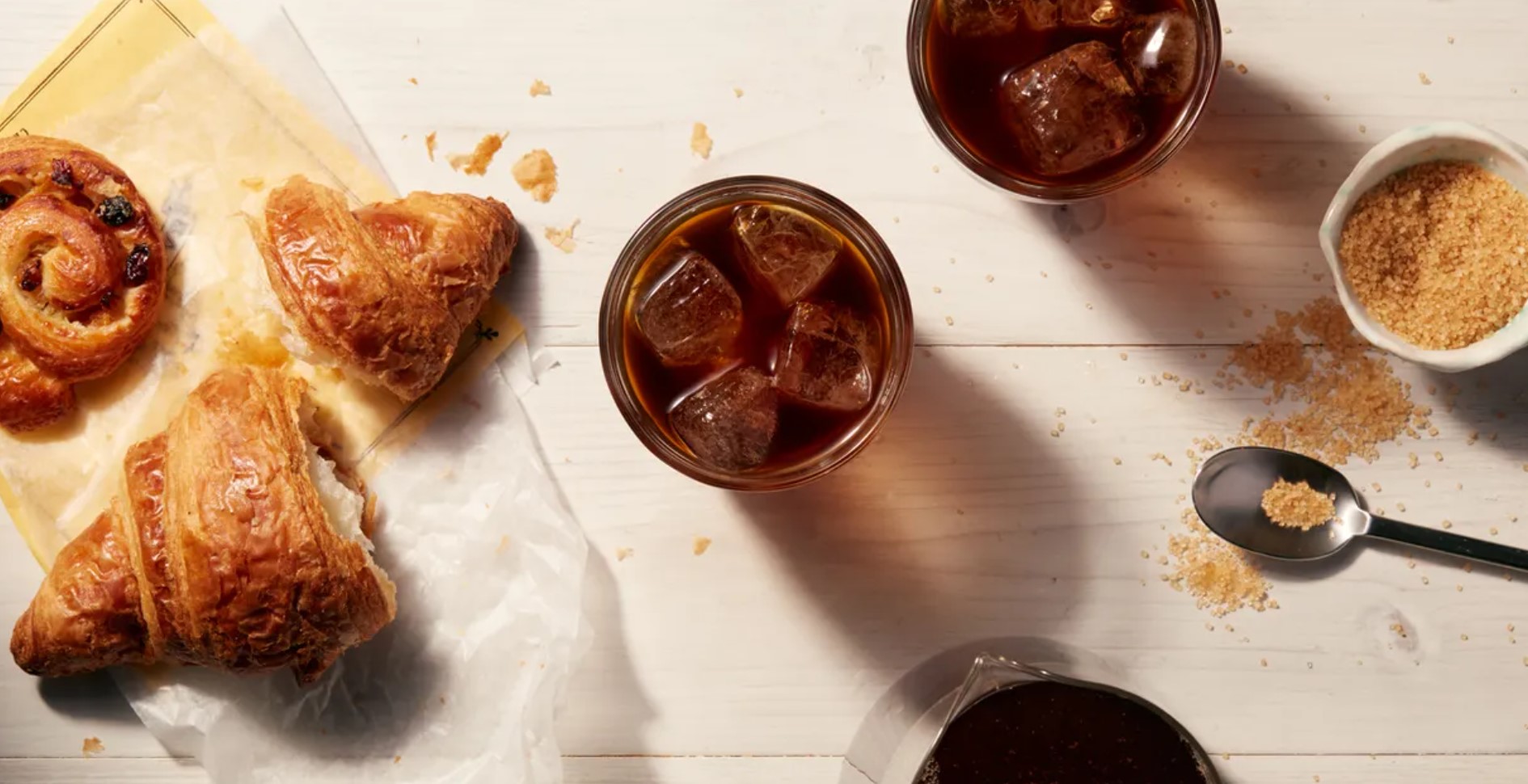
Welcome to the ultimate guide on cold brew coffee! If you’re a coffee enthusiast seeking to delve into the depths of the “The Science of Cold Brew: Chemistry and Technique for a Perfect Brew,” you’ve come to the right place. This article is a journey through the fascinating world of cold brewing, where we’ll explore the intricate chemistry that brings out the smooth and aromatic flavors in every cup. From the technique to the chemistry, we’ll cover it all, ensuring that you not only understand the principles but also master the art of cold brewing.
The Science of Cold Brew: Understanding the Chemistry
The chemical reactions that occur during the cold brew process contribute significantly to its unique taste and characteristics. Understanding the science behind cold brew is essential for crafting a perfect cup every time.
- Extraction of Flavor: Unlocking Coffee’s Potential
- In traditional hot brewing methods, high temperatures lead to rapid extraction of coffee compounds, including acids and oils, which can result in bitterness and astringency. However, cold brewing utilizes time to gradually extract flavors, resulting in a smoother and less acidic brew.
- Solubility of Coffee Solids: The Role of Temperature
- The solubility of coffee solids varies with temperature. Cold water slows down the dissolution process, allowing for a more controlled extraction of desirable compounds while leaving behind undesirable ones. This is the secret to the mellow and balanced flavor of cold brew.
- Oxidation and Antioxidants: Preserving Coffee Goodness
- Cold brew’s extended brewing time minimizes oxidation, preserving antioxidants and volatile aromatic compounds that contribute to its rich flavor and aroma.
- Acidity Levels: A Gentle Brew
- The cold brew method reduces the extraction of certain acids, making the resulting coffee less acidic and gentler on the stomach, perfect for those with sensitivity to traditional hot brews.
- Caffeine Content: Strong and Smooth
- Contrary to popular belief, cold brew is not higher in caffeine content. Although it uses a higher coffee-to-water ratio, the slower extraction process results in a smoother, naturally sweetened coffee with the same caffeine levels as hot brew.
The Technique: Mastering the Art of Cold Brew
In this section, we’ll explore the essential steps and techniques to master the art of cold brew coffee. Let’s dive in!
- Selecting the Right Coffee Beans
|
Considerations |
Tips |
|
Origin |
Opt for single-origin beans to appreciate their unique flavors. |
|
Roast Level |
Medium to dark roasts are preferred for a bold and flavorful cold brew. |
|
Freshness |
Use freshly roasted beans for the best results. Avoid stale beans. |
|
Grind Size |
Choose a medium to coarse grind to prevent over-extraction. |
- Water Quality Matters
|
Water Quality |
Tips |
|
Filtered Water |
Use filtered water to remove impurities and ensure a clean taste. |
|
Temperature |
Cold, room temperature water works best for cold brew. Avoid hot water. |
|
Mineral Content |
Avoid water with excessive mineral content, as it can affect the taste. |
- Brewing Time and Temperature
|
Brewing Duration |
Tips |
|
Steeping Time |
Aim for a steeping time of 12-24 hours for optimal extraction. |
|
Refrigeration |
Steep the coffee in the refrigerator for a consistent and controlled brew. |
|
Experimentation |
Try different steeping times to find your preferred strength and flavor. |
- The Ratio: Coffee to Water
|
Coffee-to-Water Ratio |
Tips |
|
Ideal Ratio |
Use a coffee-to-water ratio of 1:4 for a well-balanced cold brew. |
|
Adjustment |
Modify the ratio to suit your taste preferences and desired strength. |
|
Measuring |
Use a kitchen scale or measuring cup for accurate proportions. |
- Brewing Equipment
|
Equipment |
Tips |
|
Cold Brew Maker |
Invest in a purpose-built cold brew maker for convenience. |
|
Mason Jar Method |
Alternatively, use a mason jar with a fine mesh filter for a DIY approach. |
|
Filter Quality |
Ensure your filters are fine enough to prevent sediment in the brew. |
- The Art of Filtration
|
Filtration Tips |
Tips |
|
Filtering Methods |
Use a fine mesh sieve or coffee filter to remove coffee grounds. |
|
Double Straining |
Consider double straining for an extra-smooth cold brew. |
|
Storage |
Store the filtered cold brew in an airtight container in the refrigerator. |
- Serving and Enjoying
|
Serving Ideas |
Tips |
|
Over Ice |
Pour cold brew over ice for a refreshing summer drink. |
|
Dilution |
Dilute cold brew with water or milk if desired. |
|
Coffee Cocktails |
Get creative and use cold brew as a base for coffee cocktails. |
By following these techniques and experimenting with different coffee beans, grind sizes, and steeping times, you’ll be well on your way to mastering the perfect cold brew. Enjoy the process and savor every sip of your homemade cold brew creation!
FAQs: Answering Your Cold Brew Questions
1. What makes cold brew different from iced coffee?
Cold brew is brewed with cold water over an extended period, while iced coffee is made by cooling down hot-brewed coffee. The resulting flavor profiles and acidity levels differ significantly between the two.
2. Can I use any coffee bean for cold brew?
Yes, you can use any coffee bean, but medium to dark roasts are preferred for their bold flavors that shine through the cold brew process.
3. Is cold brew suitable for people sensitive to caffeine?
Yes, cold brew is often gentler on the stomach and more easily tolerated by those sensitive to caffeine due to its lower acidity.
4. Does cold brew go stale quickly?
When stored properly in the refrigerator, cold brew can stay fresh for up to two weeks, maintaining its smooth taste and aroma.
5. Can I heat cold brew coffee?
Yes, cold brew can be heated, but it’s best enjoyed cold to preserve its unique characteristics.
6. Can I make a concentrate for a stronger brew?
Absolutely! You can brew a concentrate and dilute it with water, milk, or your favorite dairy alternative when serving.
Congratulations, you’ve now mastered “The Science of Cold Brew: Chemistry and Technique for a Perfect Brew”! Armed with the knowledge of cold brew’s chemistry and expert brewing techniques, you can now embark on a delightful coffee journey like no other. Whether it’s a hot summer day or a chilly winter morning, cold brew has you covered with its smooth, rich, and refreshing flavors. So, grab your favorite coffee beans, immerse them in cold water, and let the magic of cold brew unfold!
Remember, practice makes perfect, so don’t hesitate to experiment with different beans, grind sizes, and brewing times to find your perfect cold brew formula. Enjoy your newfound coffee expertise and savor every sip of your cold brew creation.
